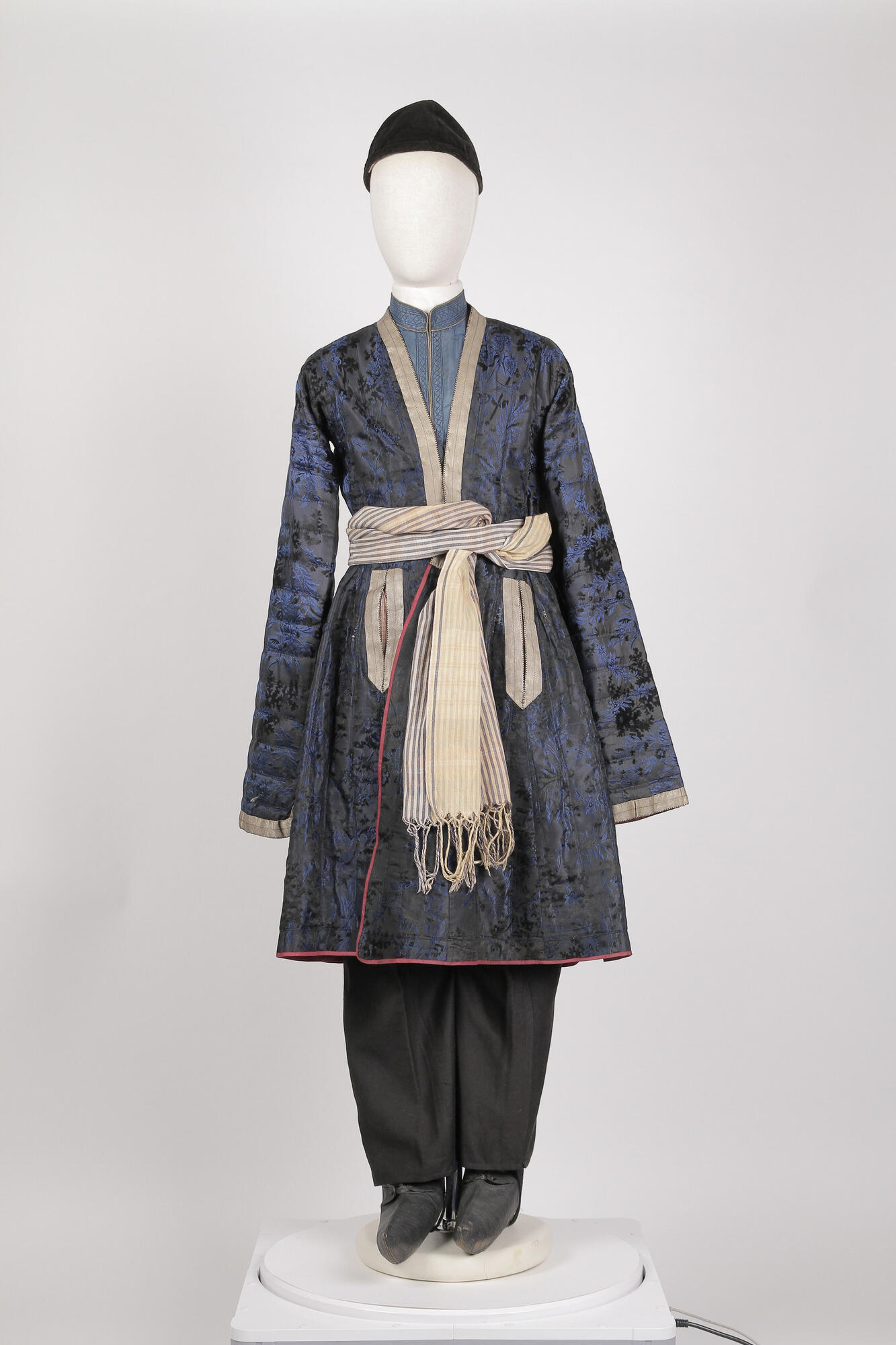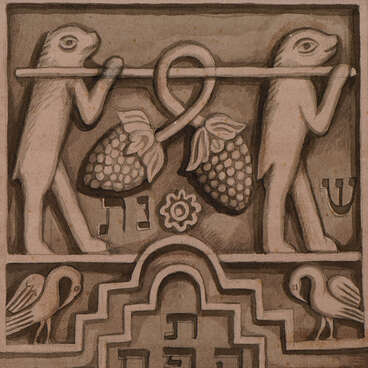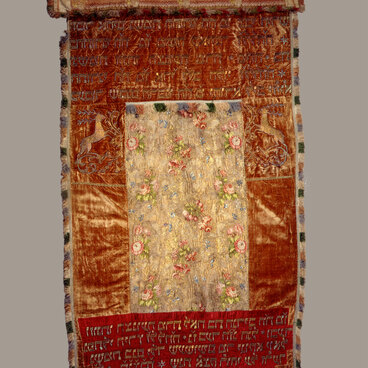An arkhaluk or ahalukhi was a men’s outer garment of the Georgian Jews. It was a tightly-fitting kaftan with wide folds on the hem. It was made of cotton, sateen, cashmere and silk. An arkhaluk was also part of the Georgian costume, it was worn by artisans and petty traders. In the Caucasus, a chokha, a woollen garment with typical cartridge holders — gazyr pockets — sewn on either side of the chest, was worn over the arkhaluk. From the second half of the 19th century the chokha became a very popular garment all over the Caucasus, and Russians called it a cherkeska. It was considered improper for Georgians to go out without a chokha even in hot weather. Many Georgian Jews were engaged in trade, so the arkhaluk was their main work clothing, while the chokha was worn on holidays. Only very well-to-do families could afford high-quality chokhas, sewn according to all the canons.
The breasts of the smart arkhaluk were trimmed with a stripe of gold or silver braid. In mountainous areas, the arkhaluk was sewn of brightly colored patterned silk, which noticeably distinguished it from the clothes of the neighboring Georgian-Ossetian population. Basically, the men’s costume of Georgian Jews belonged to the general Caucasian type of the 19th — early 20th centuries. Its main elements were shirt, pants, an arkhaluk, a belt, a hat, socks, gaiters and shoes.
Tskhinvali Jews wore cotton or silk shirts without a collar or with a stand-up collar, which was trimmed with narrow dark cord. The same cord was used to make loops on one side of the slit and buttons in the form of knots on the other. Two loops and buttons made of cord were sewn on the ends of sleeves, so that the wide sleeve would tightly fit the arm. For festive wear, on top of the shirt there was a vest in the form of a short, flared to the bottom kaftan, which was also called “arkhaluk”.
The headdresses of Caucasian Jews were quite diverse: low with a flattened crown, high, cylindrical, cone-shaped, fur and felt. All of them could be found in both the Georgian costume and that of other peoples of the Caucasus.
The breasts of the smart arkhaluk were trimmed with a stripe of gold or silver braid. In mountainous areas, the arkhaluk was sewn of brightly colored patterned silk, which noticeably distinguished it from the clothes of the neighboring Georgian-Ossetian population. Basically, the men’s costume of Georgian Jews belonged to the general Caucasian type of the 19th — early 20th centuries. Its main elements were shirt, pants, an arkhaluk, a belt, a hat, socks, gaiters and shoes.
Tskhinvali Jews wore cotton or silk shirts without a collar or with a stand-up collar, which was trimmed with narrow dark cord. The same cord was used to make loops on one side of the slit and buttons in the form of knots on the other. Two loops and buttons made of cord were sewn on the ends of sleeves, so that the wide sleeve would tightly fit the arm. For festive wear, on top of the shirt there was a vest in the form of a short, flared to the bottom kaftan, which was also called “arkhaluk”.
The headdresses of Caucasian Jews were quite diverse: low with a flattened crown, high, cylindrical, cone-shaped, fur and felt. All of them could be found in both the Georgian costume and that of other peoples of the Caucasus.



